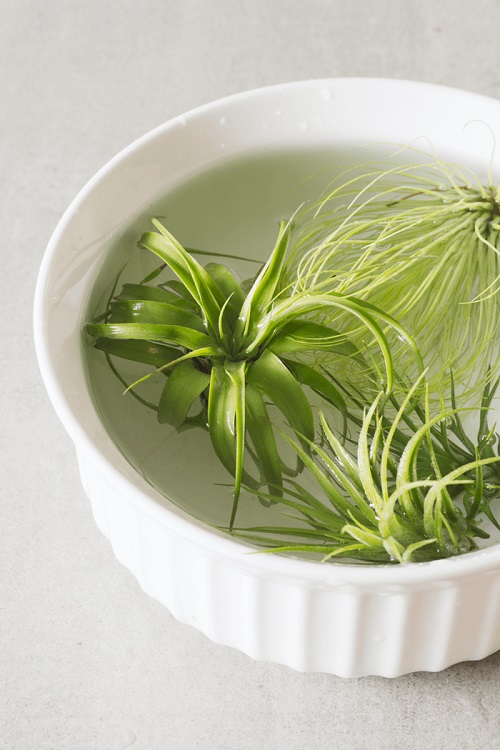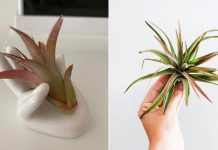Find How to Tell If An Air Plant is Dead with this guide. Discover key indicators to ensure the health of your air plants.
Air plants, also known as Tillandsia, are fascinating and low-maintenance houseplants known for their ability to grow without soil. However, like all plants, they sometimes face issues that may lead to their demise. To ensure the health of your air plants, it’s essential to know how to identify if they are thriving or if they have met their end. In this guide, you’ll explore How to Tell If An Air Plant is Dead and provide tips on how to revive or properly dispose of it.
Check Out Do All Air Plants Bloom here
Signs of a Healthy Air Plant
Let’s first understand what a thriving one looks like:
1. Vibrant Green Color
A healthy air plant typically exhibits a bright and vibrant green color. Some species may have silver or grayish foliage, but they should still look vibrant.
2. Tightly Closed Leaves
The leaves of a thriving air plant should be tightly closed and form a rosette shape. This indicates proper hydration.
3. Roots
While air plants don’t grow in soil, they may develop tiny roots called trichomes that help them attach to surfaces. These roots should appear silvery and should not be overly brown or brittle.
4. Pup Formation
Healthy air plants often produce “pups” or offshoots, which are miniature versions of the parent plant growing at the base.
Read About Air Plant Juncea Care here
How to Tell If An Air Plant is Dead – Stages of its Life Cycle
Determining whether your air plant is dead or alive can be a confusing process, and considering its stage in the life cycle is crucial. Air plants have distinct life stages, and they may appear “dead” during some phases while they are actually perfectly healthy. Here’s a breakdown of the different stages:
1. Growth Stage
During the growth stage, air plants produce new leaves, roots, and possibly offsets or “pups.” They should appear vibrant and healthy, with no signs of wilting, browning, or excessive leaf loss. At this stage, your plant is very much alive and thriving.
2. Blooming Stage
Air plants typically bloom once in their lifetime. When a plant is in the blooming stage, it may focus its energy on producing a vibrant, often colorful inflorescence (flower spike). After blooming, the mother plant may gradually decline and eventually die. However, it usually produces one or more offsets before this happens.
3. Offset or “Pup” Stage
Offsets are miniature versions of the mother plant that grows at the base. They can be separated and grown into new plants. If your air plant has produced offsets, even if the mother plant looks less vibrant or starts to decline, the offsets are still very much alive and can continue the plant’s legacy.
4. Dormant Stage
Sometimes, air plants enter a dormant phase, especially in response to environmental stressors like drought or extreme temperatures. During dormancy, they may appear duller in color, and their growth may slow or temporarily stop. However, with proper care, they can revive and return to their active growth stage.
Explore Butzii Air Plant Growing Guide here
Signs and Symptoms If An Air Plant is Dead

1. Leaf Color and Texture
Dead air plants often have brown or gray leaves that appear crispy or brittle to the touch. Healthy air plants typically have vibrant green leaves. However, some air plants may naturally change color as they approach their blooming stage, so consider the plant’s life cycle.
2. Mold or Fungus
The presence of mold or fungus on your air plant indicates poor health. Moldy spots on the leaves, especially if they appear black, can be a sign of decay.
3. Excessive Leaf Loss
While air plants naturally shed older leaves over time, a significant and continuous loss of leaves, especially from the central rosette, can signify poor health or death.
4. Root Condition
If your air plant has roots, check their color and texture. Healthy air plant roots are typically firm and white or pale green. Brown, mushy, or rotting roots are indicators of poor health.
5. No Signs of Growth
If your air plant has shown no signs of growth or change for an extended period, it may indicate dormancy or decline. However, dormant air plants can often be revived with proper care.
6. Lack of Response to Watering
Submerge the air plant in water for about 20-30 minutes, then allow it to dry thoroughly. Healthy air plants usually recover their plumpness and color within a few hours after watering. If there is no improvement after watering, it may be a sign of severe stress or death.
Explore Harrisii Air Plant Care Guide here
7. Infection or Pests
Inspect the plant for any signs of infection or pests. Mold, mildew, or the presence of insects can be detrimental to air plants and may indicate poor health.
8. Lack of Offsets
If your air plant has never produced offsets or “pups” at its base, it may be a sign of poor health or that it has not reached maturity.
Check Out How to Attach Air Plants to Wood here
Reviving or Disposing of a Dying Air Plant
If you suspect that your air plant is on the brink of death, there are a few steps you can take:
- Revival Attempt: Soak the air plant in room-temperature water for 4-8 hours. Gently shake off excess water and place it upside down to allow thorough drying. Repeat this process every few days until you see signs of improvement.
- Trim Dead Parts: If only some portions of the air plant seem unhealthy, trim the dead or brown sections using clean scissors or pruning shears. This can encourage new growth.
- Fertilize Sparingly: If your air plant shows signs of life, you can introduce a weak, water-soluble fertilizer into your watering routine to provide nutrients. Be cautious not to over-fertilize.
- Monitor and Patience: Continue to monitor the plant’s progress and be patient. It may take several weeks to see signs of recovery.
Note: However, if your air plant does not respond to revival attempts and continues to deteriorate, it’s time to accept that it may be beyond saving. In such cases, it’s essential to dispose of the plant properly and responsibly.
How to Dispose of a Dead Air Plant
- Compost: If your air plant has completely dried out and is free from mold or pests, you can add it to your compost pile.
- Garden Waste: You can also dispose of the dead air plant in your regular garden waste or yard debris bin.
- Recycle: Check with your local recycling guidelines to see if the air plant can be included with green waste recycling.
Remember that the lifespan of an air plant can vary, and some species are more resilient than others. Proper care and maintenance, including regular soaking and good air circulation, can extend the life of your air plants and help you enjoy their unique beauty for a long time.






